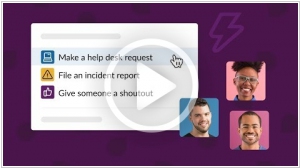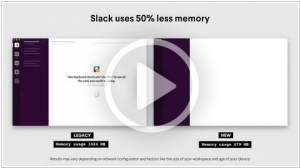Slack is #2 in Top 10 Team Messaging platforms
Slack brings all your communication together in one place. It's real-time messaging, archiving and search for modern teams. Create open channels for the projects, groups and topics that the whole team shares. Slack searches whole conversations, not just individual messages, so you can find what you’re looking for no matter who said what or when they said it.
Positions in ratings
#2 in Top 10 Team Messaging platforms
Alternatives
The best alternatives to Slack are: Microsoft Teams, Telegram, Skype, WhatsApp, Mattermost
Latest news about Slack
2022. Slack adds persistent information layer to channels called Canvas
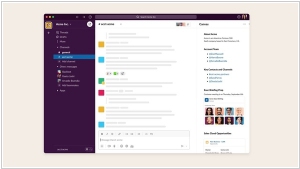
Slack has achieved considerable success in the enterprise realm by offering various communication options and seamless integration with common enterprise applications. However, until now, Slack has lacked a persistent way to share project-related information. While users could create channels to narrow down content and share documents, links, and other materials, finding them again required searching or extensive scrolling. Acknowledging this limitation, Slack has taken a step forward by combining the collaborative tooling of Quip with Slack's communication capabilities, resulting in a new tool called Canvas. Positioned alongside a channel's conversation stream, Canvas grants users access to a range of information, including data and charts, text, tasks, internal and external links, training videos, and more. This integration allows for a seamless experience where project-related information can be easily shared and accessed within the Slack platform.
2022. Slack gains new automation features, including conditional logic for workflows
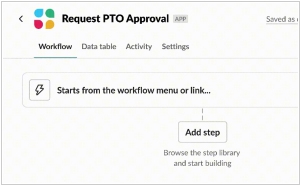
Announcing a significant update, Slack has introduced new automation features aimed at enhancing the shareability and discoverability of workflows. Building upon the existing Workflow Builder tool launched in 2019, these latest capabilities enable users to easily send workflows to other Slack users and utilize "if-then" statements to create more advanced flows. Slack's increased focus on automation aligns with the growing popularity of no-code development tools, which empower users to build apps and pipelines without requiring programming expertise. According to a survey conducted by 451 Research and FileMaker, nearly 60% of all custom apps, including automations, are now developed outside of the IT department. Furthermore, the survey revealed that 30% of these apps are created by employees with limited or no technical development skills. This trend emphasizes the importance of providing accessible automation solutions to a broader range of users.
2022. Slack is increasing prices and changing the way its free plan works
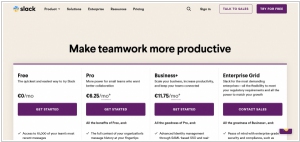
Slack, the chat platform widely used as an online watercooler for numerous teams, is implementing changes to its pricing structure and free plan functionality. For users subscribed to the "Pro" plan on a monthly basis, the price will increase from $8 per user per month to $8.75 per user per month. Similarly, for users on the annual "Pro" plan, the price will rise from $6.67 per user per month to $7.25 per user per month. As for the free plan, Slack is modifying how messages are stored. Previously, free users had access to the last 10,000 messages and 5 GB of uploads. Going forward, message retention will be based on time rather than quantity, allowing free users to view the last 90 days' worth of messages and uploads, regardless of the volume exchanged.
2021. Salesforce announces first integrations with Slack
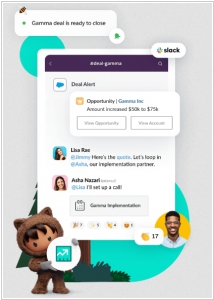
When Salesforce completed its acquisition of Slack towards the end of the previous year, it was evident that they had ambitious plans for the company. Today, the renowned CRM giant has unveiled the initial integrations that are set to benefit Salesforce customers. To begin with, the Sales Cloud now offers dedicated deal rooms. These rooms allow all parties involved in a complex sale, including internal departments such as finance and product teams, as well as external partners, to collaborate within Slack throughout the sales cycle. This enables them to stay updated on the fluctuations and progress of all sales activities. By leveraging Slack's capability to integrate external enterprise applications within its platform, the goal is to foster collaboration and discover methods to streamline and automate various Salesforce tasks. This ultimately results in faster and more efficient usage of Salesforce, eliminating the need to switch contexts in order to achieve desired outcomes.
2021. Slack now lets you DM employees in other companies
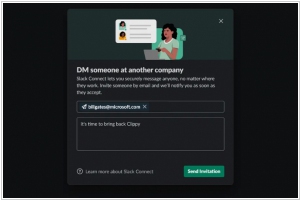
Slack has recently introduced a new feature that enables users of the platform to send direct messages to each other. Known as Slack Connect DMs, this functionality allows Slack users to privately communicate with individuals outside their own company. While primarily intended for companies collaborating with partners or clients, it can also be utilized to message friends employed at other companies. This new DM feature expands on Slack's existing Connect feature, which was introduced last year. Slack Connect primarily facilitates business collaboration through shared channels, and cross-organizational DMs represent the next significant aspect of Connect. To initiate a DM, users send a special link to start a conversation, and depending on your organization's Slack setup, Slack admin approval may be required.
2020. Salesforce buys Slack for $27.7B
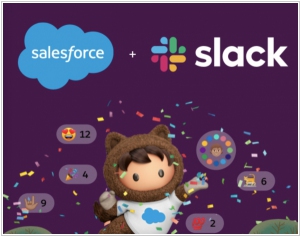
Salesforce, the renowned CRM giant, has embarked on a monumental $27.7 billion acquisition of Slack. This substantial deal positions Salesforce in closer competition with its longtime rival and occasional ally, Microsoft, whose Teams product has been directly challenging Slack in the market. Microsoft, having previously passed on acquiring Slack for a fraction of the current purchase price, has now prioritized Teams as a key focus, determined not to concede any portion of the enterprise software market to another company. What has truly set Slack apart, particularly in its early stages, is its remarkable ability to seamlessly integrate with other enterprise software. Coupled with intelligent digital assistants known as bots, Slack has the potential to offer Salesforce customers a centralized platform where they can carry out their work without shifting focus, as virtually all their necessary tasks can be accomplished within the Slack environment.
2020. Slack introduces simplified interface as usage moves deeper into companies
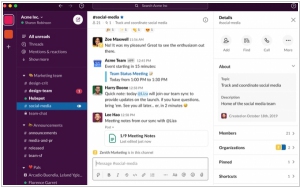
Slack has unveiled its most significant update to date, focusing on enhancing the user experience and transforming it into a more accessible enterprise communications hub. Over the years, Slack has continuously introduced new features to meet the evolving needs of its user base. However, this has led to some interface clutter. The latest redesign aims to address this issue. In addition to a cleaner overall look, one notable feature is the ability to nest channels in the Channel sidebar, allowing for better organization. As the number of channels grows, it can become challenging to navigate through them all. With the new update, users now have the option to group their channels logically and label them for easier access and management.
2019. Slack adds workflow automation feature
Slack has introduced Workflow Builder, a visual tool that empowers all Slack users to automate repetitive tasks by creating personalized workflows. With just a few minutes of setup, you can establish streamlined processes for gathering team requests, promptly reporting any service disruptions, welcoming new team members with automated messages, and a multitude of other valuable applications. To kickstart your workflow-building journey, it's recommended to leverage one of Slack's pre-built workflow templates, which can be easily downloaded and imported. These templates include features such as automatically onboarding new teammates with welcome messages, using custom forms to request specific information, and swiftly collecting real-time incident reports.
2019. Slack speeded up its group chat for Windows and Web
Slack is unveiling a significant update to its web and desktop platforms today, which doesn't introduce any novel features or alter the user interface. Instead, it represents a comprehensive reconstruction of the underlying technology. Slack assures users that this new version will consume up to 50 percent less memory compared to its predecessor, resulting in a 33 percent faster loading time. Additionally, joining incoming calls will now be ten times quicker. These improvements will be particularly noticeable for users who are part of multiple workspaces, as the new architecture takes into account the growing trend of individuals belonging to multiple workspaces. Previously, switching between workspaces consumed substantial memory and CPU resources, as each workspace had its own Electron process in the old application.
2019. Slack integrates with email
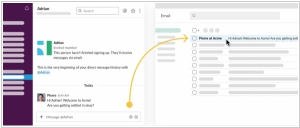
Slack has introduced a new feature that enables users to communicate with their coworkers via email. This feature will be gradually rolled out over the next few months and aims to provide individuals who don't use Slack with a means to stay updated on the conversations happening within the messaging app. When users are mentioned by their username in channels or receive direct messages, Slack will redirect those messages to their email inbox, ensuring they stay informed even if they are not actively using Slack at that moment. Initially, these Slack-to-email messages will be one-way, allowing recipients to view the conversation from their email inbox but not directly respond. However, Slack has announced that it plans to enable email responses in the future, allowing users to send messages back via email as well.
2018. Slack acquires email assistant Astrobot
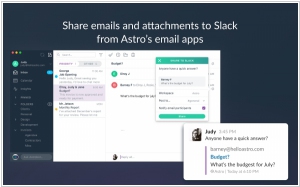
In a significant move, Slack has completed the acquisition of Astro, the startup responsible for developing the email assistant, Astrobot. This transaction represents Slack's largest acquisition to date and plays a crucial role in realizing their vision of seamlessly integrating essential workplace tools such as email and calendars within their channels. Astrobot, an app designed for Slack, directly merges email and calendars into the chat platform. It enables users to conveniently search both email and calendars without having to leave Slack. However, as part of the integration process, the standalone Mac, iOS, Android, Amazon Alexa, and Slack apps associated with Astrobot will be discontinued in October. Additionally, new user signups for these apps will be disabled immediately.
2018. Slack is buying, and shutting down HipChat and Stride
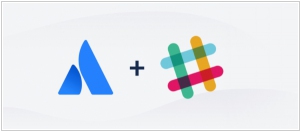
Slack has made the decision to acquire and subsequently discontinue Atlassian's workplace group chats, HipChat and Stride, both of which are direct competitors to Slack. As part of this acquisition, users of HipChat and Stride will be transitioned to Slack. HipChat initially entered the market in beta form back in 2009, predating Slack's debut in 2013. During the intervening years, HipChat held a significant presence in the industry, leading to Atlassian's acquisition in March 2012. However, Slack quickly gained popularity, surpassing HipChat for various reasons, such as a wider array of third-party integrations, a better reputation for uptime, and more effective marketing strategies. In September 2017, Atlassian revamped its chat platform and rebranded it as "Stride," but it was unable to match Slack's momentum. Ultimately, Slack's acquisition of HipChat and Stride signifies its continued dominance in the workplace communication landscape.
2018. Slack acquired routine automation app Missions
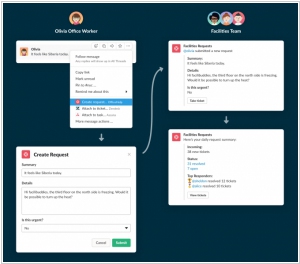
Slack has completed the acquisition of Missions, an app that enables Slack users to create code-free automation tools for streamlining routine tasks. By leveraging Missions' technology, individuals can develop workflows for activities that would typically require discussion within Slack and execute them outside of the chat environment. Slack aims to enhance team productivity by empowering users to simplify various repetitive processes. The application holds potential in assisting users with tasks such as managing approvals and rejections during the hiring process and facilitating internal ticketing. With the integration of Missions, Slack envisions providing a more efficient and streamlined experience for its users across multiple operational areas.
2018. Slack added search filters
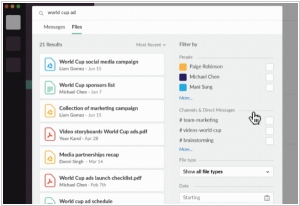
Slack’s search capabilities are receiving an additional update that focuses on enhancing the overall search experience by introducing filters. These filters allow for more precise searches, enabling users to find the most relevant answers efficiently. Moreover, the company emphasizes that searches will now be personalized, further tailoring the results to individual users. These improvements aim to address the challenge of swiftly locating specific files or conversations within Slack—a platform known for its extensive collection of group chats and channels that can become overwhelming. As companies expand in size, the volume of information within Slack grows rapidly, making it increasingly difficult to access the right information. To maintain its simplicity as an internal communication tool, Slack relies on behind-the-scenes improvements and subtle user-facing changes. The company reports that the back-end optimization has resulted in a 70 percent increase in search speed.
2018. Slack added Actions feature for deep integrations
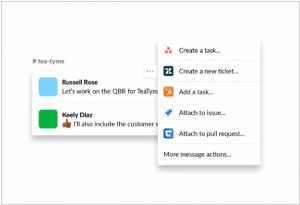
Slack has introduced an innovative feature called "actions," enhancing its existing third-party app integrations. This new functionality enables developers to deepen their app's integration with the chat service, allowing users to accomplish more tasks without ever leaving the Slack app. Unlike the current automated experiences, actions empower users to directly interact with external services from within Slack messages. For instance, if your company utilizes task management software like Asana, you can effortlessly create and assign a new task without leaving your chat. Similarly, with Zendesk, you can generate support tickets directly from a message, streamlining your workflow and increasing productivity.
2018. Slack’s Enterprise version added security enhancements
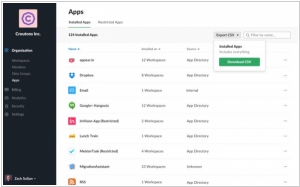
Slack has introduced a range of new security and compliance features designed to enhance the appeal of its Enterprise Grid product to IT leaders and administrators. Introduced a year ago, Enterprise Grid enables centralized management of the team chat application across an entire organization and supports up to 500,000 users. One notable addition is the new Apps page within the Slack Admin Dashboard. This feature enhances visibility and control over app usage and management across all workspaces within the organization. It offers valuable insights into app installations, channel usage, and the individuals responsible for app installations.
2017. Slack gets cool screen-sharing tool
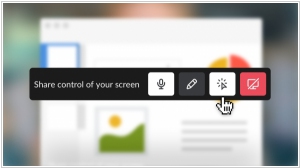
The popular collaborative workplace platform Slack has fulfilled one of its most frequently requested features by introducing a screen-sharing tool. While Slack previously allowed users in a call to share their screens with collaborators, the latest update now enables other participants to actively interact with the shared screen. This includes the ability to type, draw, and edit directly on the screen. Enabling this new interactive screen-sharing functionality on Slack is straightforward. During a Slack call, simply click the "Share control of your screen" button, granting each participant their own cursor. From there, they can freely type, edit, and draw on the shared screen, enhancing collaboration and communication.
2017. Slack raised $250 million at $5 billion valuation
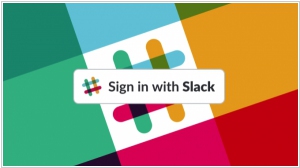
Enterprise messaging service Slack is currently in the process of raising a $250 million funding round, which would value the company at $5 billion. Slack has gained a dedicated following, particularly in Silicon Valley, but its long-term success depends on its ability to persuade large enterprises worldwide to adopt its services. While Slack positions itself as an alternative to email, it primarily serves as an internal communication platform within a company, rather than for external communication. One of the key reasons why many individuals prefer Slack over other alternatives is its contemporary interface, which resonates well with users seeking a modern communication experience.
2017. Slack adds screen sharing
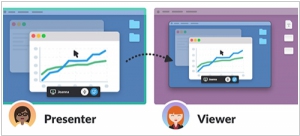
Slack has introduced a new capability for its paid users, allowing them to share real-time video of their screens during video calls. This feature will be gradually rolled out on the latest Mac and Windows apps of Slack in the coming days. To utilize Slack's screensharing functionality, simply initiate a video call and click on the screenshare button. If you have multiple screens, you can select the one you prefer to share, your webcam will be deactivated, and Slack notifications will be temporarily disabled to prevent any exposure of private information. Viewers of the call will be able to see your shared screen, including your cursor, making it easy for you to point out specific details. This native screensharing feature offered by Slack will compete with various integrations with third-party products, such as Skype, BlueJeans, Appear.in, Google Hangouts, and Zoom, that Slack already provides.
2017. Slack launched Enterprise version of its group chat
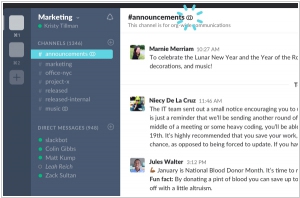
Slack has introduced Enterprise Grid, a new product specifically tailored for large enterprises. This comprehensive solution incorporates a wide range of features that are considered essential in the enterprise software market. IT administrators now have the capability to manage and provision multiple sizable teams. In addition to Slack's existing encryption measures, Enterprise Grid offers enhanced layers of security and identity management, empowering organizations to establish stricter security and compliance controls. Furthermore, it integrates with HIPAA and FINRA compliance standards and data loss prevention measures. Notable initial customers of Enterprise Grid include Capital One, Paypal, and IBM. IBM's presence is particularly noteworthy, as the company not only offers its own collaboration product, IBM Connections, for large enterprises but is also developing an AI-driven business intelligence solution called Watson Workspace. Other potential competitors in this space include Workplace by Facebook, Microsoft's Teams, Jive, and Cisco's Spark. Unlike regular Slack pricing, which starts at $8 and $15 per month for different tiers, pricing for Enterprise Grid may vary.
2017. Slack now allows to add comments to particular message
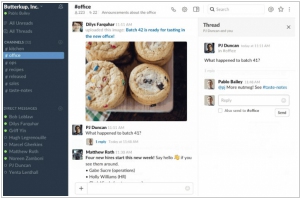
The workplace communications tool Slack has introduced threaded comments to enhance user interactions. This new feature allows users to break away from the ongoing chat chaos by pinning specific conversations to the side, which they can address more conveniently and regularly. Similar to channels and direct messages, users can effortlessly navigate in and out of their existing threads. When they wish to share new comments back into the main chat stream, they can simply check a small checkbox at the bottom of their message. The threaded comments are housed in the right-side panel that provides additional tools and resources for existing rooms and direct messages. Initiating a thread is as easy as clicking on a button next to a message in a room, similar to adding a reaction, and it branches off into a new conversation within the right panel.
2016. Slack adds video calls

In an exciting update, the collaboration messenger Slack is introducing a highly anticipated feature: video calling. Currently available for paid tiers, group video calls on Slack can accommodate up to 15 participants. Initially, this feature will be rolled out on Slack for Mac and Windows desktop versions, as well as on Google Chrome, within the next few days. Mobile users will also be able to join video calls; however, their experience will be limited to audio-only participation. What sets video calls in Slack apart is the integration of emojis. Many individuals who engage in video and audio conferencing for work often opt to mute themselves to avoid interrupting their colleagues with unintentional noises. With the new update, instead of fumbling to unmute themselves for quick responses, users can now express their reactions with emojis, such as a thumbs up or any other appropriate option, simplifying communication during video calls.
2016. Google and Slack team up against Microsoft and Facebook
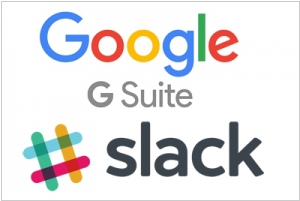
Recently, Microsoft and Facebook unveiled their own versions of the popular collaboration platform Slack, namely Teams and Workplace. Understandably, Slack faces formidable competition, prompting them to seek a partnership with Google. Consequently, the companies have entered into a strategic partnership agreement to deeply integrate their respective products. Notably, Slack will be made available as an app within G Suite (formerly known as Google Apps), enabling administrators to enable or disable it for their users. Moreover, within Slack, users will have the ability to preview documents using Google Docs editors and synchronize access rights for files attached from Google Drive. Additionally, Slack will integrate with Google Team Drives, a team-oriented version of Google Drive recently launched by Google.
2016. Slack to be powered by IBM Watson AI
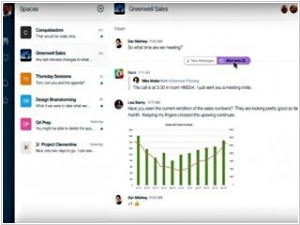
IBM and Slack have announced a partnership that brings together Slack's digital workplace platform with the cognitive computing capabilities of Watson. The aim of this collaboration is to leverage Watson's artificial intelligence (AI) learning engine to enhance the Slack user experience through features like bots and conversational inferences. Developers now have the ability to harness the advanced cognitive functionality provided by Watson, including services like Conversation, Sentiment Analysis, and speech APIs, to create innovative tools for the Slack platform. This partnership seeks to combine the strengths of both companies to deliver improved productivity and intelligence within the Slack ecosystem.
2016. Slack deeply integrates with Salesforce
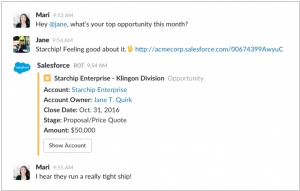
Enterprise chat application Slack is set to establish a "deep product partnership" with Salesforce, resulting in a seamless integration that simplifies data sharing between the two platforms. This integration primarily focuses on facilitating the exchange of information related to employee conversations and sales account details, enabling businesses to collaborate more effectively. Functioning similarly to other Slack integrations, the Salesforce integration involves the use of a backslash followed by the keyword "Salesforce" to bring data into the conversation. This strategic partnership has sparked speculation that Salesforce may be considering acquiring the collaboration service, as the company has previously aimed to make its own messaging app, Chatter, more widely adopted without significant success thus far. It is worth noting that there have been rumors suggesting Microsoft's interest in acquiring Slack as well.
2016. Slack launched
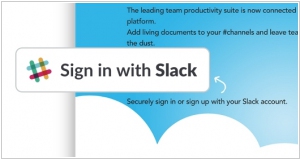
Slack has introduced a new feature called "Sign in with Slack," enabling users to sign into and utilize other applications using their Slack credentials. This places Slack in direct competition with Facebook and Google, who also operate in this market. The introduction of "Sign in with Slack" has the potential to establish Slack as the primary identity provider for enterprises. Instead of having to remember unique login information for each workplace application, users can simply utilize their Slack login. This strategic move capitalizes on the widespread need for chat communication within companies. While other workplace applications may be limited to specific departments, messaging serves as the crucial element that connects an entire business. Notable launch partners supporting Slack's identity feature include Quip (a cloud-based word processing and collaboration app), Figma, Kifi, Officevibe, Smooz, and Slackline.
2016. Threaded messaging is coming to Slack
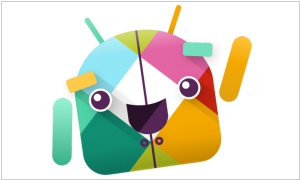
CEO Stewart Butterfield of Slack has announced that threaded messaging, a highly anticipated feature, will be introduced in the next quarter. Despite being a missing component in Slack's service, threaded messaging has been extensively used internally during the testing phase to determine the best version for the platform. The addition of threaded messaging will bring Slack on par with other collaboration services such as Yammer, Citrix's Podio, and Convo, leveling the playing field and expanding Slack's reach. While Slack currently functions as a tool for creating work-centric chat rooms with integrated direct messaging, threaded comments will elevate the service to a new level, making it an integral part of the workflow and disrupting existing services in the process.
2015. Slack launched App Directory and will be funding developers
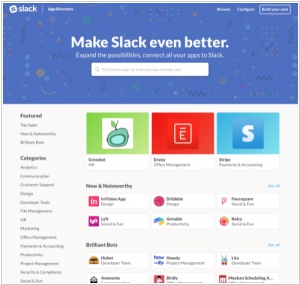
Enterprise collaboration service Slack aims to encourage developers to create Slack apps beyond the existing 150 applications showcased in its new App Directory. In addition, Slack has announced a collaboration with its investors, which include renowned Bay Area venture capitalists such as Accel, Andreessen Horowitz, Index Ventures, KPCB, Spark, and Social+Capital. They have collectively invested $80 million in a Slack-first fund, intending to support enterprise software developers who integrate Slack into their core products. The goal is to enhance Slack's utility and convenience in the workplace through various applications. This substantial investment ensures the continued growth and success of the Slack platform, as competitors cannot replicate its developer ecosystem despite copying its core messaging features. Consequently, Slack holds a competitive advantage over rivals like HipChat.
2015. Enterprise messaging service Slack introduced User Groups
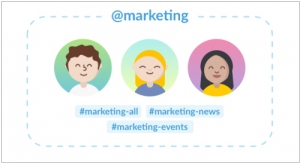
Slack is aiming to improve the functioning of larger organizations by introducing a new feature called User Groups. This feature enables the targeted delivery of notifications to different departments within the organization. Whether it's communicating with engineers, customer service teams, or marketing teams, user groups ensure that entire departments can quickly receive alerts regarding important matters. These initiatives align with Slack's overarching goal of enhancing the platform's effectiveness for larger organizations. It's important to note that this feature will only be available for Slack teams subscribed to paid plans.
2015. Slack adds emails to channels
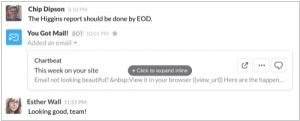
Email remains a widely used and valuable communication tool for receiving updates from various online services. Recognizing its significance, Slack is introducing a new feature that allows teams on the Standard or Plus plans to direct emails into Slack channels. However, it's crucial to set up this integration correctly to avoid overwhelming channels with irrelevant content. Thoughtfully consider which emails you want to bring into Slack and determine the appropriate channels for posting them. By having support tickets automatically appear in a dedicated support channel, your company can swiftly take action and provide prompt assistance. While replying to emails within Slack is not possible, the notifications alone hold substantial value. Slack aims to reduce reliance on internal emails, which often cause frustration in the workplace for many individuals.
2015. Slack integrated with Google Calendar
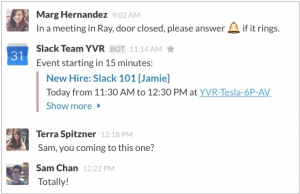
Slack, the widely used communication tool in offices, has introduced integration with Google Calendar, enabling automatic posting of event reminders within Slack channels. By connecting a Google account to Slack, users can select any calendar and specify the Slack channels where the events should be posted. For instance, it is possible to set up reminders from a development deadline calendar to be posted in the #dev channel two days before a product deadline. Alternatively, for more festive occasions, a company's birthday or holiday calendar can automatically post in the #general channel, allowing the entire team to celebrate together. Additionally, this integration facilitates the distribution of daily or weekly calendar summaries to all members subscribed to a specific Slack channel.
2015. Collaboration chat Slack gets a native Windows app
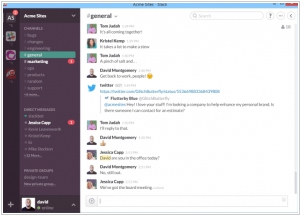
The highly popular group collaboration messenger, Slack, has finally launched its Windows app. For those unfamiliar, Slack can be described as a private chatroom designed for teams. It offers a visually appealing interface and the ability to seamlessly integrate various tools, ranging from Dropbox to Giphy, with just a simple click. The introduction of the Windows app enhances the Slack experience by providing easier access. Users can now run Slack in its own dedicated window, conveniently add it to their start menu, and switch to it using the alt-tab function, eliminating the need to navigate through multiple browser tabs. The Windows app also ensures that chat notifications are tightly integrated into the operating system, allows users to switch between multiple Slack teams within a single window (instead of separate tabs), and offers convenient features like the ability to minimize Slack to the task tray until it is needed. Overall, the Windows app provides a smoother and more enjoyable user experience for Slack users.
2015. Slack aquired screen-sharing tool Screenhero

Slack, the renowned workplace communication service, has recently acquired Screenhero, a team-oriented screen-sharing tool, with the intention of incorporating its functionalities. Screenhero offers a wide range of collaboration tools, including voice chat, enhanced screen sharing capabilities, and the ability to have multiple mouse cursors interacting across various applications. The team of six from the startup will join Slack and collaborate on integrating and advancing these features within the platform. This acquisition marks Slack's second to date, following its purchase of Spaces, another startup focused on developing collaboration tools, in September.
2015. Slack launches a new plan for larger companies
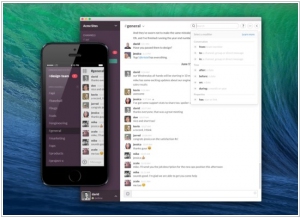
Collaboration chat app Slack has introduced several new features tailored for teams in need of assistance with single sign-on, compliance exports, a 99.99 percent uptime guarantee, and 24/7 premium support. This offering, known as the Plus plan, is a fresh option available at a price of $12.50 per user per month. According to officials from Slack, the Plus plan is designed to cater to companies with specific requirements for team management, security, and/or compliance. Typically, these organizations tend to be larger in size. Prior to this update, Slack provided two options: Lite, a free version with certain limitations, and Standard.
2014. Slack is now a billion-dollar company
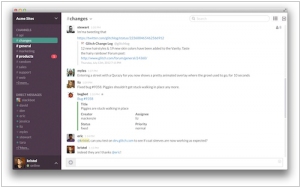
The enterprise collaboration chat platform, Slack, has successfully concluded a funding round of $120 million, resulting in a valuation of $1.12 billion. With 30,000 active customers, Slack has established itself as a prominent player in the rapidly growing work-collaboration domain, which has become a focal point for cloud providers in the ongoing competition for storage services. Over the past year, major players such as Google, Amazon, and Microsoft have repeatedly reduced their storage prices, while also emphasizing their work-collaboration features as a means of attracting new users. Additionally, Dropbox and Box have been showcasing their own tools to ensure they remain competitive in this evolving landscape.
2014. Slack buys document-collaboration startup Spaces
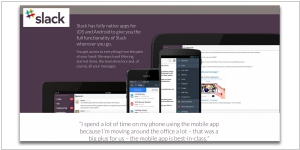
Chat-based collaboration service Slack has acquired Spaces, a two-person startup that operated independently without external funding. The financial details of the acquisition were not disclosed. Spaces' primary offering is a collaborative document where users can work together by incorporating graphics, text, annotations, and other work-related elements. Given Slack's objective to create a centralized platform for enterprise work, the acquisition aligns well with their vision. The success of Slack as a prominent startup underscores the significance placed by major cloud providers on work collaboration tools, as demonstrated by Amazon's Zocalo product. Furthermore, Slack's progress is also exerting pressure on Box and Dropbox, both of which have been enhancing their workflow management capabilities in recent months.


